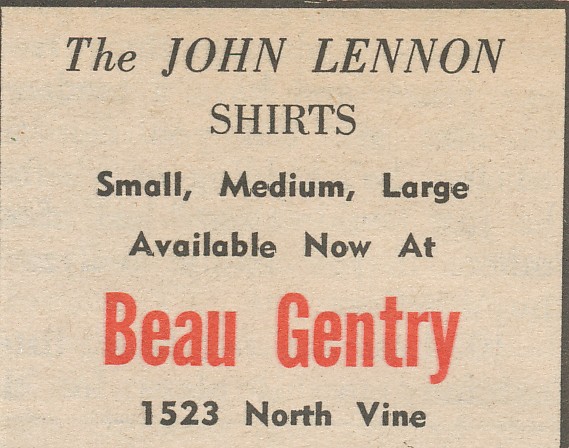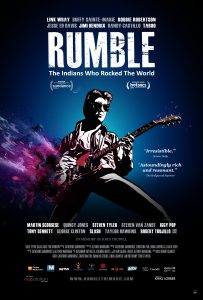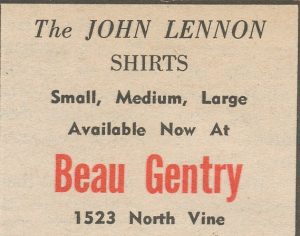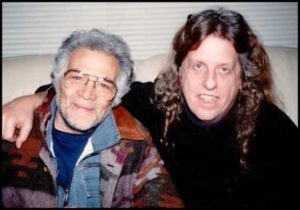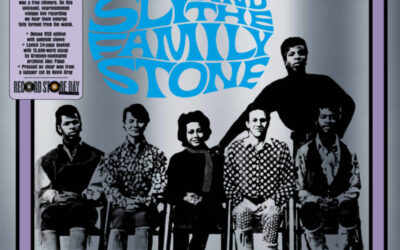© 2017 Harvey Kubernik
I’m blowing the shofar ram’s horn for Rumble: The Indians Who Rocked the World. The dazzling feature documentary from Montreal,  Canada-based Rezolution pictures about the role of Native Americans in popular music history.
Canada-based Rezolution pictures about the role of Native Americans in popular music history.
In Rumble, director and Rezolution co-founder Catherine Bainbridge and co-director and director of photography Alfonso Maiorama examine the journey of Native Americans on record and stage. They expose a critical and profound missing chapter, revealing how indigenous musicians helped influence audio culture.
The on-screen participating contributors in Rumble are a list of music artists, historians, family members, and experts who acknowledge Native musicians that helped shape the soundtracks of their lives: Buffy Sainte-Marie, Robbie Robertson, Martin Scorsese, Tony Bennett, Steven Tyler, Iggy Pop, Buddy Guy, Taj Mahal, Cyril Neville, Ivan Neville, John Trudell, Steven Van Zandt, Corey Harris, Jesse Ed Davis, Alvin Youngblood Hart, David Fricke, Guy Davis, Monk Boudreaux, Quincy Jones, Jackson Browne, Martha Redbone, James “Hutch” Hutchinson, Joy Harjo, as well as Pat Vegas (Redbone), Wayne Kramer (MC5), Slash (Guns ‘N’ Roses), Dan Auerbach (The Black Keys), Marky Ramone (The Ramones), Taylor Hawkins (Foo Fighters), Pura Fe Crescioni (Ulali), Rhiannon Giddens (Carolina Chocolate Drops), Mike Inez (Alice in Chains), George Clinton, Robert Trujillo (Metallica), and Taboo (Black Eyed Peas).
Bainbridge and Maiorama previously helmed Reel Injun about the representations of Native Americans in Hollywood movies.
Rumble earned a Sundance special jury award for “masterful storytelling,” and the film also received best music documentary at the Boulder International Film Festival. The movie just had its U.S. theatrical premiere in late July at Film Forum in New York.
National screenings are scheduled for summer and fall in Vancouver, Montreal, Philadelphia, Washington, Minneapolis, Atlanta, Denver, San Francisco, Berkeley, San Diego and Los Angeles.
Rumble is booked for an August 25th-31st engagement in West L.A. at the Landmark Nuart Theatre.
The film’s title comes from the 1958 hit instrumental single “Rumble” by Link Ray & His Ray Men issued on Archie Blyer’s Cadence label.
Wray, born to Shawnee parents in North Carolina, was a major guitar influence on Jeff Beck, Pete Townshend, Jimmy Page, and many others.
In the documentary It Might get Loud, Page describes hearing “Rumble” as a turning point in his own love of the guitar.
“‘Rumble’ had the power to push me over the edge, and it did help me say: ‘Fuck it, I’m gonna be a musician,” stressed Iggy Pop. “That was the rawest form of the kind of guitar that all of the guys that I listened to, that’s where it started,” confessed Slash of Guns ‘N Roses, while Steven Van Zandt of Bruce Springsteen & the E Street Band recollected, “Here comes Link Wray with the theme song of juvenile delinquency…. I’m not surprised it was banned.”
Further testimony is supplied by the MC5’s Wayne Kramer, “He was one of the first that really had a tone that pointed the way to the future.”
“There might not be a Who, were there no Link Wray; there might not be a Jeff Beck Group, were there no Link Wray; there might not be a Led Zeppelin, if there were no Link Wray,” summarized Taylor Hawkins of the Foo Fighters.
“Rumble” has since been heard in Quentin Tarentino’s Pulp Fiction and in the surf documentary Riding Giants, directed by Stacy Peralta. It’s also been used in the HBO television show The Sopranos and additional movies, including Independence Day and Blow.
“In Rumble, for the first time a film reveals a fascinating, and until now unknown, influence on the formation of rock and roll,” explained Bainbridge and Maiorama in their Director’s statement press notes.
“The music that has become a part of who we are. We are so honoured to be able to tell this story about the influence of iconic Native American musicians speak about how these icons were an influence, you listen! Native American music – born of this land – was violently suppressed for many years as both American and Canadian governments outlawed Native ceremonies and rituals in a deliberate attempt to break the people.
“As a result, the music was forced underground and found its expression in alternative ways. It is important to note that the primary drivers in the creation of blues and jazz and therefore rock were African Americans, but Native Americans, like Europeans , also played a part.
“We feel that it is important for everyone, and especially Native youth who have so few pop culture role models, to have proof, through the icons we feature and the famous people that give our story credibility, that Indigenous cultures were an integral part of the evolution of popular music. The truth that we want to expose in Rumble is that the attempted erasure of Native American people, their culture, and their music, didn’t work. As Robbie Robertson said in one of our interviews with him ‘you wouldn’t let me talk about it before, well now I’m going to talk real loud.’”
“One can’t help but notice the rhythms of—or the pulse that was here, that is here; been here. The feel of Native American is in a lot of rock ‘n’ roll,” suggested George Clinton. “It’s interesting how much the Native American element just filters through,” offered Martin Scorsese, while Joy Harjo, a Muscogee-Creek musician and poet added, “Our peoples were part of the origin story of blues and jazz and rock of American music but we’re left out of the story consistently from the beginning.”
During Rumble, half-Jewish, half-Mohawk, Robbie Robertson, co-founder of the Band, reflected in an interview, “My real guitar lessons were at the Six Nations Indian Reserve in Ontario. All my cousins, uncles – everybody — seemed like they could play an instrument. If you considered yourself a real rock ’n’ roll guitar player, you had to learn ‘Rumble.’ It was raw and dirty, and had that rebellious spirit to it.”
The influence of the Native American has never been lost on musician/actor/producer, Steven Van Zandt, whose production company is named Renegade Nation.
Van Zandt further cited the impact of Robertson and the Band, whose commercially successful roots-music groundbreaking sound emerged in 1968 after a 1966 world tour backing Bob Dylan and 1967 Basement Tapes recording sessions with Dylan.
“The entire industry got right back to song writing, and Robbie Robertson, one of the great song writers of all time, had effectuated that change by his own sensibility, and the Band’s sensibility.”
A highlight of Rumble for me was seeing Coalinga, California-born Pat Vasquez, of Pat & Lolly Vegas fame.
In the sixties, they were booked all over Hollywood at clubs like Gazzari’s and the Haunted House and appearing on the ‘60s television series Shindig! They had the hippest wardrobe on the Sunset Strip and patrons of the Beau Gentry menswear shop.
In 1967 P.J. Proby had a Top 30 national hit single with “Niki Hokey,” penned by the Vegas brothers with Jim Ford.
In 1968, on advice from Jimi Hendrix, himself part Cherokee, Negro and Scot, told Pat and Lolly to form an all-Native American rock group “do the Indian thing, man.”
Jimi used to go to Thee Experience club in Hollywood on Sunset Blvd. where Pat and Lolly jammed a lot. Hendrix loved playing with the Vegas brothers. One night they were on stage with Jimi, who announced, “Damn, you guys are hot! You’ve got to form a group. This is the group right here!”
They became Redbone, which is a Cajun term describing a mixed-race person. Pat and Lolly were of Mexican, Yaqui and Shoshone descent. Two other Native Americans joined them, Tony Bellamy and Pete DePoe.
Redbone signed to Epic Records and had a hit single in 1974 with “Come and Get Your Love” followed by “We Were All Wounded at Wounded Knee” and “The Witch Queen of New Orleans.”
“They couldn’t believe it: here they are, these four Indians,” marveled Pat, “with, you know, garb and moccasins and—and all the things that they’ve seen in films, actually playing rock!”
Rumble concludes with film footage of the ongoing Native American protests at the Dakota Access Pipeline site in North Dakota and a performance by Cree singer/songwriter and activist Buffy Saint-Marie (“Bury My Heart at Wounded Knee”). Her core work has always focused on Native American social issues. Her 1964 composition “Universal Soldier” was initially covered by Glen Campbell and Donovan.
Rumble was inspired by the Smithsonian Institution exhibit Up Where We Belong: Native Musicians In Popular Culture, created by Tim Johnson and Apache Stevie Salas for the National Museum of the American Indian.
Consultant to Rumble is Brian Wright MacLeod, author of Encyclopedia of Native American Music.
James Cushing: ‘“America — it’s an Indian thing’ (Allen Ginsberg, quoted in the film Road Scholar by Andre Codrescu).
“What didn’t you do to bury me? But you forgot that I was a seed” (Greek poet Dinos Christianopolis, b. 1931).
“American popular music is a source of pride and joy; American genocide of the First Nations people is a source of shame and sorrow. Rumble: The Indians Who Rocked the World is the only document about the intersection of these powerful forces.
“An alternate title could have been The Return of the Repressed. Attempts by whites to bury the First Nations’ drum rituals and tribal songs resulted, as the film shows, in the deepest rhythms of Delta blues, New Orleans second-line jazz, Mildred Bailey’s cabaret swing, Link Wray’s invention of heavy metal — and that’s not even half the story.
“Filled with strong interviews and shocking archival footage, Rumble restores American music’s greater context. Its story is both tragic and life-affirming… like the real blues.”
Celeste Goyer: When I met Russell Means on the set of a movie filming in the mountains above Los Angeles in 1997, I had not yet read Where White Men Fear to Tread, his hair-raising autobiography.
“I had not yet been saddened and scandalized by the open hatred of many whites toward the Paiute-Shoshone in Bishop, California, where I lived for five years. Fear of the wild continues to drive racism and environmental destruction in this country and beyond.
“Rumble: The Indians Who Rocked the World arrives in wonderful contrast to that immensely damaging, limiting fear. Wildness has not only been always welcomed by rock and roll and other rhythm music, it was built on it. Thanks to the filmmakers for this essential contribution.”
In 1985, I met Buffy Sainte-Marie. At the time Buffy was married to arranger/composer Jack Nitzsche. I was living with a keyboardist who did European live shows with Buffy and played synthesizer with Jack on some film scores. We all went out on a double date one evening to the Comedy Store in Hollywood where Jack put together a band and performed for a Free Leonard Peltier benefit.
Buffy subsequently introduced me to her friend, Santee Dakota poet John Trudell, the political activist and musician, who in the ‘70s served as chairman of the American Indian Movement.
In 1986 I produced a spoken word event with Trudell and Jello Biafra of the Dead Kennedys at McCabe’s Guitar Shop. The room was packed for this game-changing uncensored verbal platform of Indian and punk tongue.
During ’86 I presented a show with John Trudell and Kiowa/Comanche guitarist Jesse Ed Davis at Be Bop Records in Reseda.
Rumble is dedicated to John Trudell.
I recently ran into Steven Tyler of Aerosmith. He professed his love for the Gene Clark-fronted Byrds, and the Doors. Tyler mentioned he owned a copy of my Canyon of Dreams The Magic and the Music of Laurel Canyon.
Steven praised guitarist Davis. “I particularly fell in love with Jesse Ed Davis, because he was with Taj Mahal and Taj’s album is what spurred me to rock more that touched something inside me.”
“In 1964, I got word that Mike Seeger, of the New Lost City Ramblers, was coming to the west coast for a rare solo tour,” remembered multi-instrumentalist Chris Darrow.
“It was a chance to meet my idol and speak to him, face to face. Our bluegrass band, the Re-Organized Dry City Payers, opened for him at the Meeting Place in Upland and we had a wonderful night of music. Genius guitar player Clarence White, who would later join the Byrds, showed up with Buffy Sainte-Marie to see the show and brought a few of his band mates from the Kentucky Colonels with him. It was a night I will never forget. Buffy even gave me one of her tortoise shell flat picks!
“I first met Nik Venet in 1967 on Dick Clark’s American Bandstand while I was in the Dirt Band. He was the record producer for Linda Ronstadt, who was performing her new record on the show. Nik produced Linda’s hit, Different Drum. It was my first introduction to Linda and I was deeply impressed both by her voice and her beauty.
“Nik and I were both interested in the Native American culture. My wife’s uncle ran a trading post on the Navajo reservation in New Mexico,
south of Farmington. Her family had been interested in American Indian art for years. We both collected rugs and ceramics as well as artifacts of the Native Americans.
“Later on, Nik got highly involved in the politics of the Native American Indian and worked to raise money for imprisoned Native American activist Leonard Peltier and was friendly with Russell Means. I played at a benefit at Doug Weston’s Troubadour in West Hollywood to help raise money for Leonard. John York and I performed as a duet for another benefit at El Cholo.
“After the Troubadour show, Venet presented me with a surprise gift. There had been a beautiful Navajo rug on the stage that we all performed around.
“Nik picked up the rug and said, ‘Here, I’d like you to have this, Chris, both Russell Means and Leonard Peltier have wrapped themselves in this blanket.’
“I look at this rug every day and think of Nik. He died of cancer in 1998.”
Harvey Kubernik has been a music journalist for over 44 years. He is the author of 12 books, including Leonard Cohen, Everybody Knows, and Neil Young, Heart of Gold.
In April 2017, Sterling published Kubernik’s acclaimed 1967 A Complete Rock Music History of the Summer of Love. Kubernik is currently working on his debut literary music anthology and a book on the Doors both for publication during last quarter 2017.

